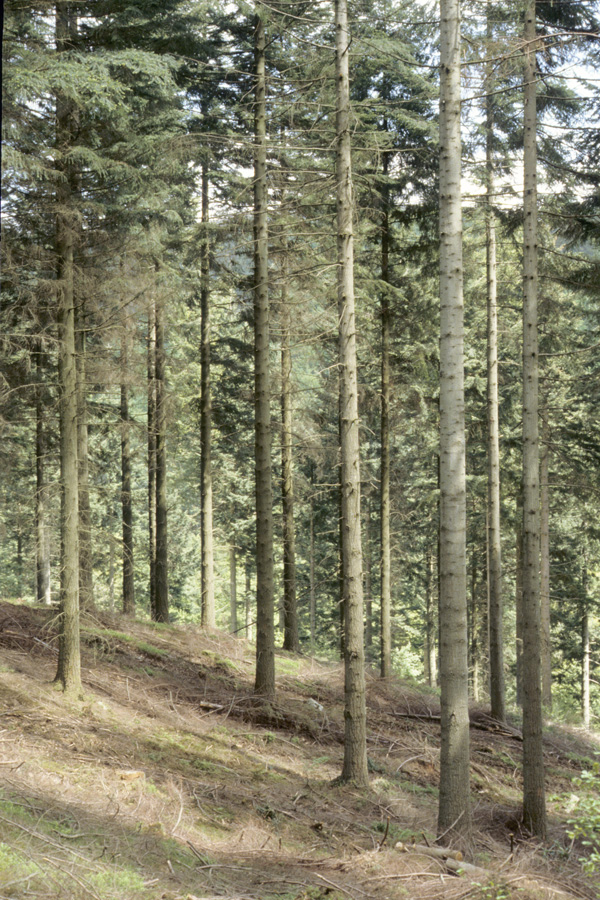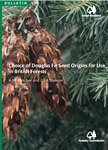Summary

Like hybrid larch, Douglas fir (DF) breeding has had periods of rising and falling interests. Plus trees were selected in the 1950s and progeny tests were established intermittently from then until the first half of the 1970s; a total of 26 tests in 10 series. It was then deemed that insufficient planting was taking place to justify a costly breeding programme.
David Douglas’ original seed collection in 1826 was quite small, and the trees derived from it yielded the first collections of British seed that was widely distributed among landowners. Later introductions in the 1850s, together with Douglas’ material, formed the basis of some of the early plus tree selections. Many of these selections were therefore closely related and clear signs of inbreeding depression often appeared in the early progeny tests, notably among full-sib crosses.
Interest was renewed in the early 1990s when 12 experiments containing approximately 350 open-pollinated families from parent trees selected in the states of Washington and Oregon (USA) were established through a partnership with a number of other European countries. Data are still being collected from these relatively recent experiments. The objective is to analyse all the DF progeny trials for height and stem-straightness and construct breeding and production populations.
It is not envisaged that breeding will proceed into a second generation.
Publication
 Selecting Douglas fir seed sources for use in Britain
Selecting Douglas fir seed sources for use in Britain
By: A. Fletcher and S. Samuel.
Forestry Commission Bulletin 129.
General Content
What’s of interest
For more details see the following sections of
Fifty years of tree breeding in Britain:
The field progeny testing programme
Production of improved material
